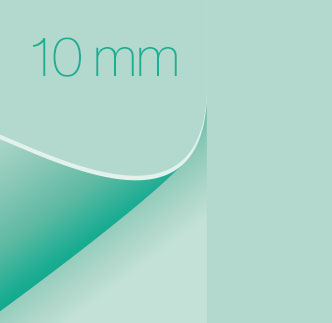
Acoustic wallpapers in various thicknesses and surfaces are a decorative and economical way to reduce the noise level in a space. Sound-blocking averages between 25% and 55%, depending on wallpaper thickness. It can be applied to part of a wall or to an entire wall, as needed.
In addition, the material is a good insulator because of its low thermoconductivity. A wallpaper thickness of 10 mm gives a heat gain of about 25percent.
Acoustic wallpapers can be painted or printed on.
Roll width (cm): 100
Thickness (mm): approx. 3, 5, and 10
Weight (Kq/qm): 1 and 1.55
Material: Polyester fleece with SBR latex foam
Degree of sound blocking (%): 25, 32, 75
R-value for 5 mm: E/λ = 0.106 m²
R-value for 10 mm: E/λ = 0.213 m²
Heat-transfer coefficient (U): 1.58 W/m²K
Absorbent substrate required. Highly-absorbent substrates must be pretreated with a primer. Thoroughly clean and degrease non-absorbent substrates, sand lightly, and apply an adhesive primer. Allow adhesive primers to dry for 24 hours. Cut lengths of wallpaper to measure; unroll them to lie flat. With a roller or serrated trowel, apply adhesive evenly to the wall, position the wallpaper on the wall, and press it evenly onto the wall using a plastic putty knife. Next, position subsequent pieces of wallpaper alongside the preceding one, leaving a gap of 5 mm between them. Then caulk the gaps. Leave the work to dry for 12 to 24 hours. To paint over the wallpaper, use micro-porous acrylic paint.
